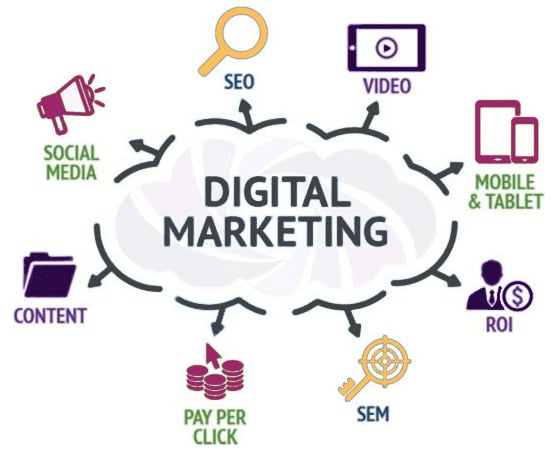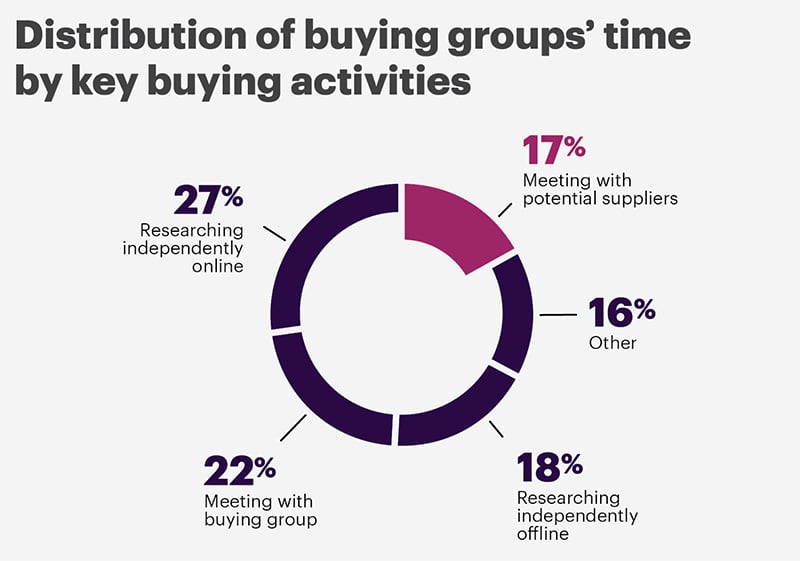
10 Most Painful Manufacturing Marketing Challenges and How to Solve Them
Here's a fact. Marketers encounter almost the same challenges across all industries. However, the perspectives differ on how to approach these roadblocks.
Ramping up and sustaining your lead-gen efforts, for instance, is always a key focus in the marketing department. However, the specifics of what makes this a struggle fluctuate as per your sector.
Manufacturing marketing professionals face many frequently quoted hurdles indicative of their particular businesses and ecosystems.
To gain a clearer idea, we sought to understand what aspects marketers in the manufacturing sector find critical and in which areas they struggle with. Hence, we've compiled the top 10 challenges and their respective solutions.
10 Major Marketing Challenges Manufacturers Face And How To Solve Them
Manufacturing companies frequently face different promotional hurdles, making it challenging to market their goods and attract new clients successfully. Below are a few of the most common marketing problems which manufacturers face, as well as their respective solutions:
1. Creating intent-based email lists
Buying email lists may appear to be a simple and fast way to communicate with your audience. However, it's almost always a blunder.
Once you buy an email list, there is no guarantee that the individuals who are included are interested in your products or services.
Receivers of such emails are less prone to participate with your brand and may even mark your communications as junk mail. When? If they have no previous ties with your corporation.
To have your emails marked as spam can harm your professional image. In addition, it may negatively affect your capability to communicate with genuinely engaged leads.
The Solution
To effectively reach and engage your target audience, produce valuable content that establishes a connection with them. Here are some more tips to create email lists:
- Define your target audience: Clearly identify who your ideal customers are.
- Use tools: Use email scraping tools to collect the email addresses of your target audience.
- Social media: Gather email addresses from social media platforms such as LinkedIn, Facebook, and Twitter.
- Online groups: Join online groups related to your niche, and connect with members by offering valuable content.
- Website sign-ups: Offer a sign-up form on your website to collect email addresses from visitors.
- Confirm Opt-in: Make sure you obtain permission from users before adding them to your email list.
Email marketing is an effective way to stay connected with your audience and nurture leads, despite the competition in inboxes.
Recent B2B studies have shown that emails remain one of the most successful methods for maintaining contact with customers. In fact, it still promises to deliver the highest ROI of all marketing channels—$42 back for every dollar you spend.
2. Non-familiarity With Emerging Tech
As an industrial marketer, it is crucial to stay updated with the latest marketing best practices, tools, and opportunities. Digital marketing is composed of multiple components such as a clear website layout, landing pages with forms, informative content, and SEO, among others.

Neglecting any of these elements could result in missing out on potential growth and customer connections.
The Solution
Instead of sticking to one marketing tool or strategy, even if it appears to be successful, it is critical to consider new and innovative options.
It is also important to not hesitate to invest in new online marketing techniques, even if there is uncertainty about their effectiveness.
One solution is to hire an industrial marketing agency with a proven track record of helping similar companies grow.
This agency should explore new ways to reach customers, establish the business as a thought leader and valued resource, and establish trust as a supplier.
3. Marketing Automation in Manufacturing
Marketing automation solutions work alongside employees, allowing them to focus on more engaging work.
Such platforms can automate repetitive and time-consuming tasks, such as data analysis and email. This allows marketers to identify priority markets and accomplish more with less effort.
The Solution
However, there are limitations to marketing automation. First, automation solutions require a robust and healthy marketing database before they can be effectively used.
Second, teams need to understand that automation is not a one-time tactic and needs to be updated to engage with the latest audience.
Third, without a plan in place, automation can nurture bad marketing habits and damage a brand's reputation by encouraging impersonal messaging that does not resonate with the audience.
Marketers should keep in mind the importance of having the foundations in place, regular maintenance, and maintaining a personal tone to avoid any negative impact on the brand.
Automation is an important element of any marketing strategy, but it is essential to understand its limitations and use it effectively.
4. Understanding the Entire Purchase Cycle
In today's digital age, B2B buyers tend to be well-versed in technology and expect on-demand, device-optimized, interactive and visually appealing content.
They use online tools, supplier discovery platforms, and company websites to research and evaluate suppliers and products independently. As a result, they typically make 70% of their purchase decision before interacting with a supplier.
In fact‚ Gartner research finds that when B2B buyers consider a purchase‚ they spend only 17% of that time meeting with potential suppliers. When buyers compare multiple suppliers, the amount of time spent with a sales rep may be only 5% or 6%.

The Solution
During the early stage of the buying process targeted PPC and SEO can help raise awareness of solutions. Strong content marketing such as blogs, white papers and videos can assist buyers in their research.
Engineers and specific buyers require detailed product data like spec sheets, CAD models and BIM files to make decisions during the design stage.
As buyers move closer to the final stages of evaluating and selecting suppliers, they often turn to third-party platforms.
These users have typically completed research and are actively seeking suppliers to provide solutions and join their supply chain. An updated, optimized industrial website is essential throughout the entire buying process.
5. Managing Your Leads
Effective industrial marketers understand that not all leads are the same and should be pursued differently for optimal success.
For example, a lead who fills out a form on the website for an eBook download is different from a lead who fills out a form for a demonstration or consultation with the company.
The former is considered a marketing-qualified lead (MQL), who is interested in the product or service but needs more information before making a purchase.
The latter is a sales-qualified lead (SQL), who is ready to buy the product or service without additional information or persuasion.
The Solution
It is important to correctly identify and distinguish between MQLs and SQLs to convert leads into revenue effectively.
Contacting prospects who are only browsing for information prematurely can lead to them losing interest. Using marketing tools can help keep track of lead actions and prioritize which leads to follow up with and when.
6. The Advent of Digital Transformation
For a long time, digital transformation in the manufacturing industry has primarily focused on changes on the factory floor, such as implementing QR codes, predictive maintenance, and machine learning to streamline production. However, this focus on production often resulted in limited investment in marketing and sales.
For manufacturers to stay competitive, digital transformation must be comprehensive and involve all aspects of the business. This includes sales and marketing.
The Solution
One way to bring digital transformation to sales and marketing is by leveraging data. By adopting digital tools such as sales force automation technology, customer relationship management software, and marketing automation platforms, manufacturing companies can collect valuable insights into their audience.
These insights can create adequate marketing collateral and inform sales strategies. In addition, these tools can automate tedious data collection and analysis tasks, allowing teams to focus on streamlining processes and driving results.
7. Designing an Updated and Informative Website
In today's digital age, buyers often prefer to self-educate, research and select suppliers on their own time, using their own devices.
They often do not want to speak to a salesperson when they can get the information they need from the company website. A comprehensive and informative website that is kept up to date can work 24/7 to attract new leads and engage with customers.
However, some manufacturers may have limited resources or are uncertain on what to update on their website.
The Solution
To make informed decisions, industrial marketers often use hard data instead of relying on intuition. They use A/B testing to determine which marketing approaches are most effective with their customers.
This data helps them to continuously adapt their approach to changing trends and customer interests. They also use Growth-Driven Design (GDD) to revise, upgrade, and optimize their websites. GDD eliminates the need for a significant one-time investment.
Marketing tools like HubSpot and Google Analytics can provide insights on the most effective pages and help replicate successful strategies to attract more leads. In addition, by using these tools, manufacturers can be better informed during sales conversations.
8. An Increasingly Prevalent Marketing Skills Gap
The manufacturing industry faces a unique challenge with the retirement of the baby boomer generation and the need to nurture and grow a new workforce.
This multi-generational gap in the workforce presents a challenge as the older generation takes their knowledge and experience with them, leaving younger generations with fewer opportunities to learn and keep the industry running.
The Solution
Modern technology presents an opportunity for manufacturers to overcome this challenge. For example, digital solutions such as webinars allow experienced workers to record lessons and share insights with new employees easily.
By building a "digital university" manufacturers can train employees of all ages and foster a forward-thinking mindset.
This investment in digital educational experiences helps train employees and can be scaled to other areas of the business, accelerating digital adoption across marketing, sales and product teams.
9. Non-accessibility to Appropriate Resources
The manufacturing industry can be complex, as is digital marketing. Manufacturing companies often have a small office staff and a large labor force.
Similarly, an employee with other responsibilities cannot effectively manage digital marketing.
As the internet is always accessible, digital marketing should be working for your business every hour of every day. However, if you dedicate limited time and effort to marketing, you will only achieve limited results.
Similarly, if you only applied partial effort to maintenance, customer service, or product quality, it could negatively impact your business and staff.
The Solution
One solution is to outsource to a marketing agency, hire a full-time marketing professional, or freelance a marketing professional.
When the budget allows, working with a marketing agency offers a broader range of capabilities and reduces the time required to manage an additional employee.
When considering options, it is important to select the one that ensures your business can be easily found online and continues to attract high-quality leads in the short and long-term.
10. Staying Competitive in the Global Marketplace
To effectively market to a global audience, manufacturers must understand the cultural and linguistic differences that may affect their messaging and approach. This means creating localized content and campaigns that resonate with specific regions and audiences.
The Solution
Manufacturers should use localization tools and services to ensure their websites and other digital assets are easily accessible and understandable to audiences worldwide. This includes translation, currency conversion, and even time zone adjustments.
In addition, manufacturers should know about any legal and regulatory differences affecting their marketing efforts globally. This includes compliance with data privacy laws and restrictions on certain types of advertising or messaging.
Finally, manufacturing marketers should leverage global partnerships and influencers to expand their reach and credibility in new markets. This can include working with local distributors, resellers, or industry experts to reach new audiences and gain valuable insights into local market conditions and trends.
Overall, effectively marketing to a global audience requires a strategic approach that considers cultural, linguistic, legal, and regulatory factors, as well as a commitment to monitor and adapt to the changing global landscape constantly.
How Can Revnew Help?
By reaching out to our experts at Revnew, you can learn more about your options and discuss a plan that fits your specific needs and goals. Investing in manufacturing lead generation focused marketing will allow you to focus on your core business operations while creating new growth opportunities.
By dedicating the necessary resources to marketing, you can have peace of mind knowing that your business is being proactively promoted and reaching new potential customers.




